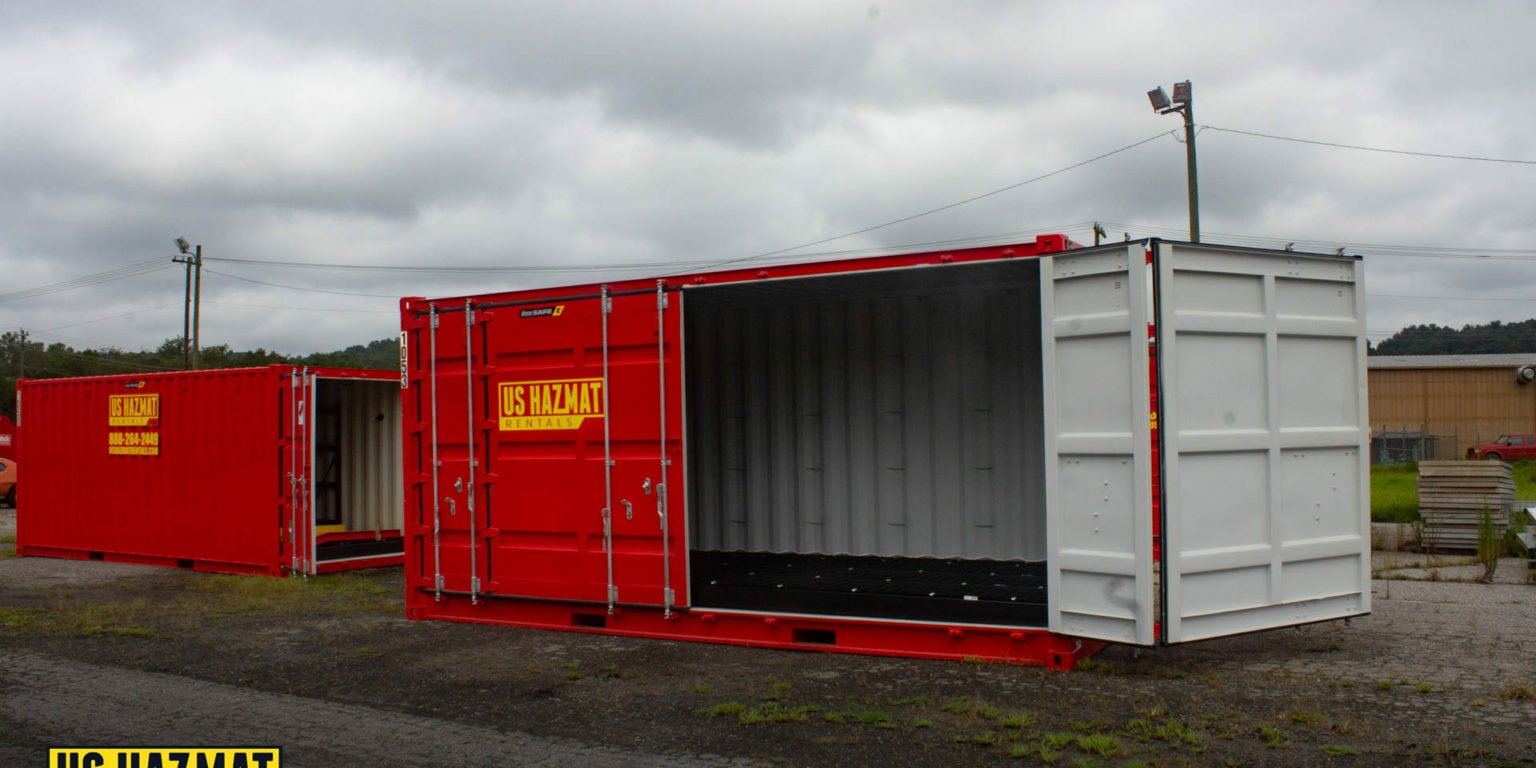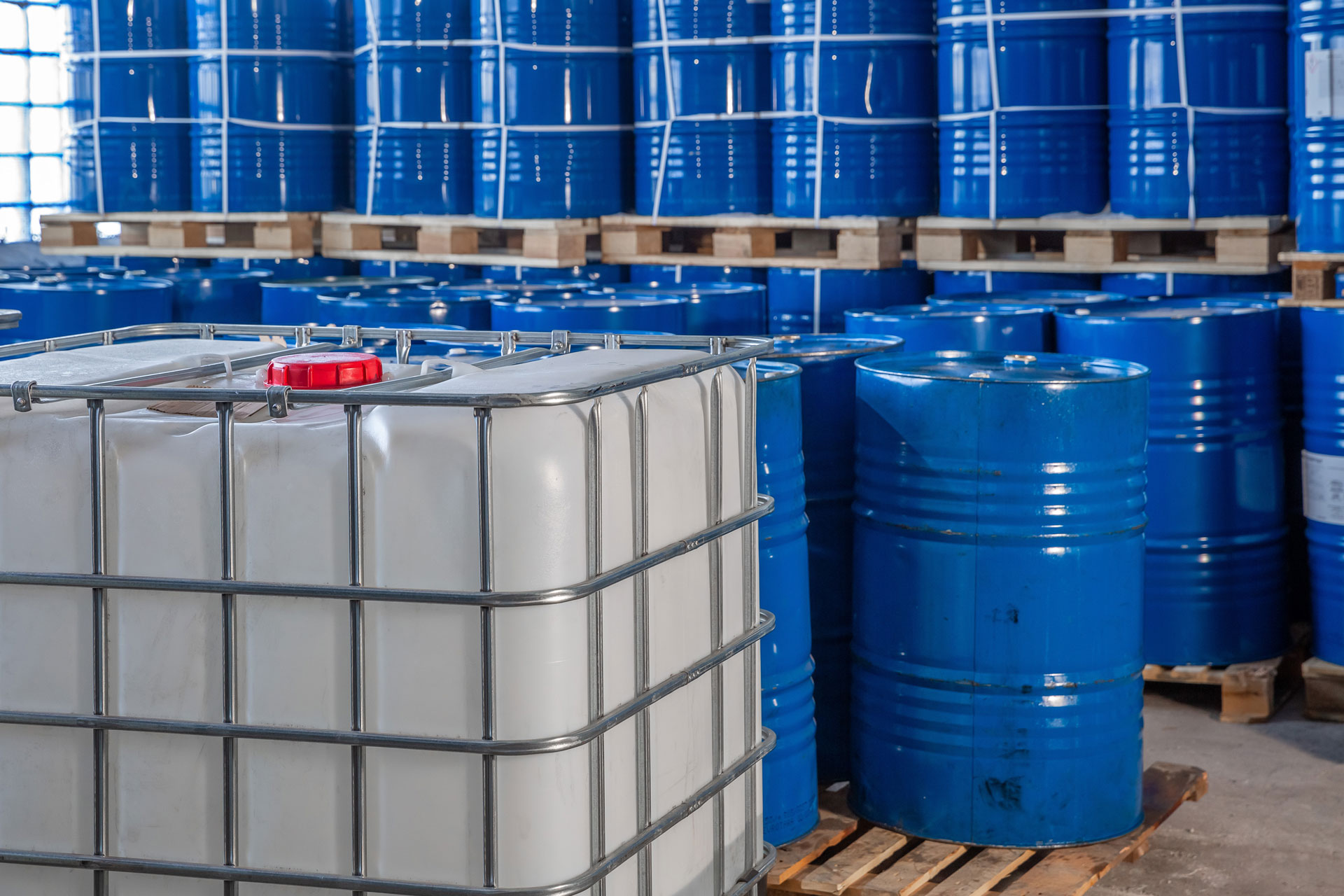OSHA Regulations & Standards
OSHA regulations and standards for chemical storage vary on hazardous classification. While non-fire-rated storage is sufficient for protecting nitrogen and certain metals, other chemicals require tougher construction. Flammable storage can be a logistical nightmare for product inventory. No company likes running low on supplies. Supply-chain interruptions affect every stage of production. Product shortages were all too common during the pandemic. With microchips running scarce, the automotive industry struggled to keep up with demand, causing manufacturing to seize up like a spun bearing. Other manufacturers stockpiled ancillary products to curb shortages. However, companies can only store some building materials in large quantities. While the temptation exists for bulk purchases of flammable materials during more stable economic times, doing so can run afoul strenuous OSHA regulations.
Ethanol hand sanitizer was liquid gold during the pandemic. Looking to offset anticipated shortages, the healthcare sector buoyed dwindling stockpiles with exorbitant orders of hand sanitizer. While they might’ve scored points with the local health department, they caught the watchful eye of OSHA inspectors, forcing hospitals to seek flammable storage for bulk goods. U.S. Hazmat Rentals can provide compliant flammable storage for every industry while satisfying overzealous government regulations, ensuring lasting compliance.
OSHA Flammable Liquids Classifications
Below are the four primary OSHA flammable liquids classifications, detailing the innate physical properties and pre-existing conditions that pose the greatest flashover risks.
-
- Category 1 shall include liquids having flashpoints below 73.4 °F (23 °C) and having a boiling point at or below 95 °F (35 °C).
- Category 2 shall include liquids having flashpoints below 73.4 °F (23 °C) and having a boiling point above 95 °F (35 °C).
- Category 3 shall include liquids having flashpoints at or above 73.4 °F (23 °C) and at or below 140 °F (60 °C). When a Category 3 liquid with a flashpoint at or above 100 °F (37.8 °C) is heated for use to within 30 °F (16.7 °C) of its flashpoint, it shall be handled in accordance with the requirements for a Category 3 liquid with a flashpoint below 100 °F (37.8 °C).
- Category 4 shall include liquids having flashpoints above 140 °F (60 °C) and at or below 199.4 °F (93 °C). When a Category 4 flammable liquid is heated for use to within 30 °F (16.7 °C) of its flashpoint, it shall be handled in accordance with the requirements for a Category 3 liquid with a flashpoint at or above 100 °F (37.8 °C). Source: OSHA.gov.
OSHA Regulations for Flammable Storage
OSHA says no more than 25 gallons of flammable or combustible liquids may be stored in a room outside of an approved storage cabinet. Additionally, OSHA requires no more than 60 gallons of flammable liquid (flashpoint below 140 degrees F) or 120 gallons of combustible (flashpoint at or above 140 degrees F) to be stored in a single chemical storage container or warehouse. OSHA also requires rated storage safety cabinets when possible. Furthermore, any Category I, II, or III flammable liquids should be kept in closed containers when not in use. NFPA 30 warns against storing more than 120 gallons of Class IB, Class IC, Class II, or Class III liquids in containers. Finally, the NFPA caps any combination of Class IB, IC, or IIIA liquids in metal tanks or metal IBC containers – each not exceeding 793 gallons – at 1,585 total liquid gallons.

Not more than 60 gallons of Category 1, 2 and/or 3 flammable liquids or 120 gallons of Category 4 flammable liquids shall be stored in any one storage cabinet. Not more than three such cabinets may be located in a single storage area. Quantities in excess of this shall be stored in an inside storage room.
OSHA 1926.152(b)(3)
Flammable materials should never be stored in areas used for exits, stairways, or egresses. Additionally, flammable materials should always be stored at or below eye level. Avoid stacking flammable materials and never store these chemicals with incompatible hazardous materials. While OSHA regulations don’t stipulate fire suppression for smaller quantities, investing in fire suppression prevents smaller ignitions from overwhelming standard fire retardants. OSHA requires at least “one portable fire extinguisher having a rating of not less than 20-B units shall be located not less than 25 feet, nor more than 75 feet from any flammable liquid storage area located outside.” Where sprinklers are provided, these fixtures must be installed in accordance with the Standard for the Installation of Sprinkler Systems.
Flammable Liquids Stacking and Passageways
OSHA also advises against stacking containers with capacities over 30 gallons atop one another. Furthermore, “areas in which flammable liquids are transferred from one tank or container to another container shall be separated from other operations in the building by adequate distance or by construction having adequate fire resistance,” according to OSHA. OSHA Regulation 1910.106(d)(5)(vi)(f) also requires aisles or passable egresses “of at least 3 feet wide shall be provided where necessary for reasons of access to doors, windows or standpipe connections.”
Compliant Protection for Paints and Thinners
Paints and coatings are some of the most common hazardous materials in modern construction. Paints are flammable liquids and federal regulations dictate compliant storage. Internal chemical storage reduces the chance of fire and chemical degradation caused by high temperatures. All chemical storage lockers should be constructed of fire-resistant rated materials for proper paint storage protection.
Flammable Storage for Processed Metals and Solid-State Batteries
Although liquid flammable storage comprises the lion’s share of our chemical storage inquiries, select solid chemicals also require compliant protection. All alkali metals, including lithium, aluminum, cadmium, titanium, and potassium are highly flammable. Because of their susceptibility to ignite in unstable atmospheric conditions, powdered metals should always be stored in a well-ventilated area with climate control to prevent rapid temperature fluctuations. Solid-state and lithium-ion batteries are extremely flammable. Furthermore, lithium ion batteries can be prone to thermal runaway, which are extreme exothermic chain reactions within the battery. All batteries should be stored at room temperature, necessitating the need for mechanical ventilation. During a fire, lithium-metal batteries require a Class D fire extinguisher while water will suffice for lithium-ion battery fires.
Proper Chemical Labeling and Signage Streamlines Compliant Storage
‘Sign, sign, everywhere a sign… Do this don’t do that, can’t you read a sign?’ While the ubiquity of hazmat signage can be an eyesore ‘blockin’ out the scenery’ of the job site humming right along, proper chemical labeling and safety signage keeps your job site safe and compliant. Brightly colored exclamatory warning signs are constant reminders for your workforce of the inherent dangers of flammable chemicals. Each flammable storage cabinet or warehouse should display “FLAMMABLE” and “KEEP FIRE AWAY” signage and markings. Each letter height for “FLAMMABLE” should be two inches while the minimum letter height for “KEEP FIRE AWAY” should be one inch. Proper chemical labeling prevents misidentification and inadvertent flammable storage with incompatible materials. Never store hazardous materials alphabetically as this practice contradicts hazardous classifications and groupings.
OSHA Requirements for Fire-Rated Construction
OSHA flammable chemicals storage cabinets and lockers must be designed to limit “the internal temperature to not more than 325 °F when subjected to a 10-minute fire test using the standard time-temperature curve as set forth in Standard Methods of Fire Tests of Building Construction and Materials, NFPA 251-1969.” OSHA has also developed material requirements for metal storage lockers and cabinets. OSHA requires the “bottom, top, door, and sides of the (storage) cabinet shall be at least No. 18 gauge sheet steel and shall be double-walled.” Joints of metal storage lockers and cabinets must be riveted, welded, or made tight by equally effective means. Moreover, the storage locker door shall be provided with a three-point lock, and the door sill shall be raised at least 2 inches above the bottom of the cabinet, according to OSHA standard 1910.106(d)(3)(ii)(a)
Employee Training and Routine Maintenance Saves Lives, Profits
Employees are your company’s most valuable asset; investing in their training and safety will reap the greatest dividends. Every project safety manager should confirm that employees are trained in safe handling practices, spill response procedures, and emergency evacuation protocols related to flammable liquid storage. Furthermore, managers must document employee training records and regularly conduct refresher training sessions to reinforce safe practices. Establishing a routine maintenance protocol of all storage containers, equipment, and facilities will also minimize your company’s risk of violating OSHA regulations and standards.
Regulatory Compliance Documentation
Although consistent flammable storage compliance can be daunting, the downside of failure to abide by federal regulations can prove catastrophic. All employers should maintain up-to-date documentation, including permits, licenses, and certificates of compliance with NFPA 30 and other relevant regulations. Furthermore, keep records of material safety data sheets (MSDS) for all stored flammable liquids and ensure they are readily accessible to employees.
Compliant Flammable Storage
U.S. Hazmat Rentals can provide a turnkey solution to any chemical storage dilemma. Our fire-rated flammable storage lockers meet all OSHA regulations and NFPA 30 standards. Optional fire suppression, climate control, and mechanical ventilation can mitigate common hazards while protecting your bottom line. Contact us today for a free consultation.








